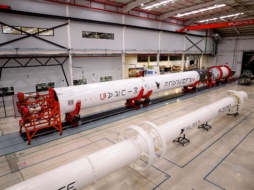Isar Aerospace has broken the European launch barrier.
The German startup’s Spectrum rocket lifted off the pad at the Andøya spaceport on Sunday, and flew for approximately 30 seconds before crashing just off the coast.
“This test flight met our expectations for a first launch with a completely clean slate design, in every way. As I have experienced before, it normally can take a few attempts to reach orbit, yet after today’s test flight, I am very confident that Isar Aerospace will be one of the fastest to do so,” Bulent Altan, Isar’s chairman and former SpaceX VP, said in a statement.
Fly, fly again: Despite the launch’s explosive ending, Isar Aerospace is planning to launch its second test flight soon. There’s no set launch date yet, as Isar engineers will need to comb through flight data from Sunday’s launch, but the company’s second and third launch vehicles are already in production.
Spectrum, a two-stage rocket developed almost entirely in-house, is powered by ten engines—nine on the first stage, and one on the second. It’s capable of bringing 1,000 kg to LEO, or 700 kg to SSO, vastly increasing Europe’s access to orbit for small and medium satellites. Isar’s long-term plan is to produce up to 40 Spectrum vehicles per year.
Soft launch: The flight marks the first time a commercial European rocket has attempted to reach orbit from European soil, and the space industry hopes it will usher in a new era for launch on the continent.
As part of its European Launcher Challenge, ESA is investing hundreds of millions of euros in sovereign launch companies to develop a range of rockets, and now these companies have at least one working spaceport on the continent from which they can launch.
The spaceport offers unique benefits for European satellite companies, who previously needed to ship their payloads across the ocean before reaching orbit. Andøya lowers this transit time and overall mission cost. The spaceport also gives satellite operators the ability to reach polar orbit—a growing preference for commercial and military sats as the Arctic region opens up to more commercial and military maritime traffic.
As was evident this week, however, the spaceport also has its pitfalls. Located on the coast of northern Norway, the launch site is exposed to rough weather and stiff Atlantic winds—Isar’s debut launch was originally scheduled for Monday, but was delayed multiple times due to high winds.




